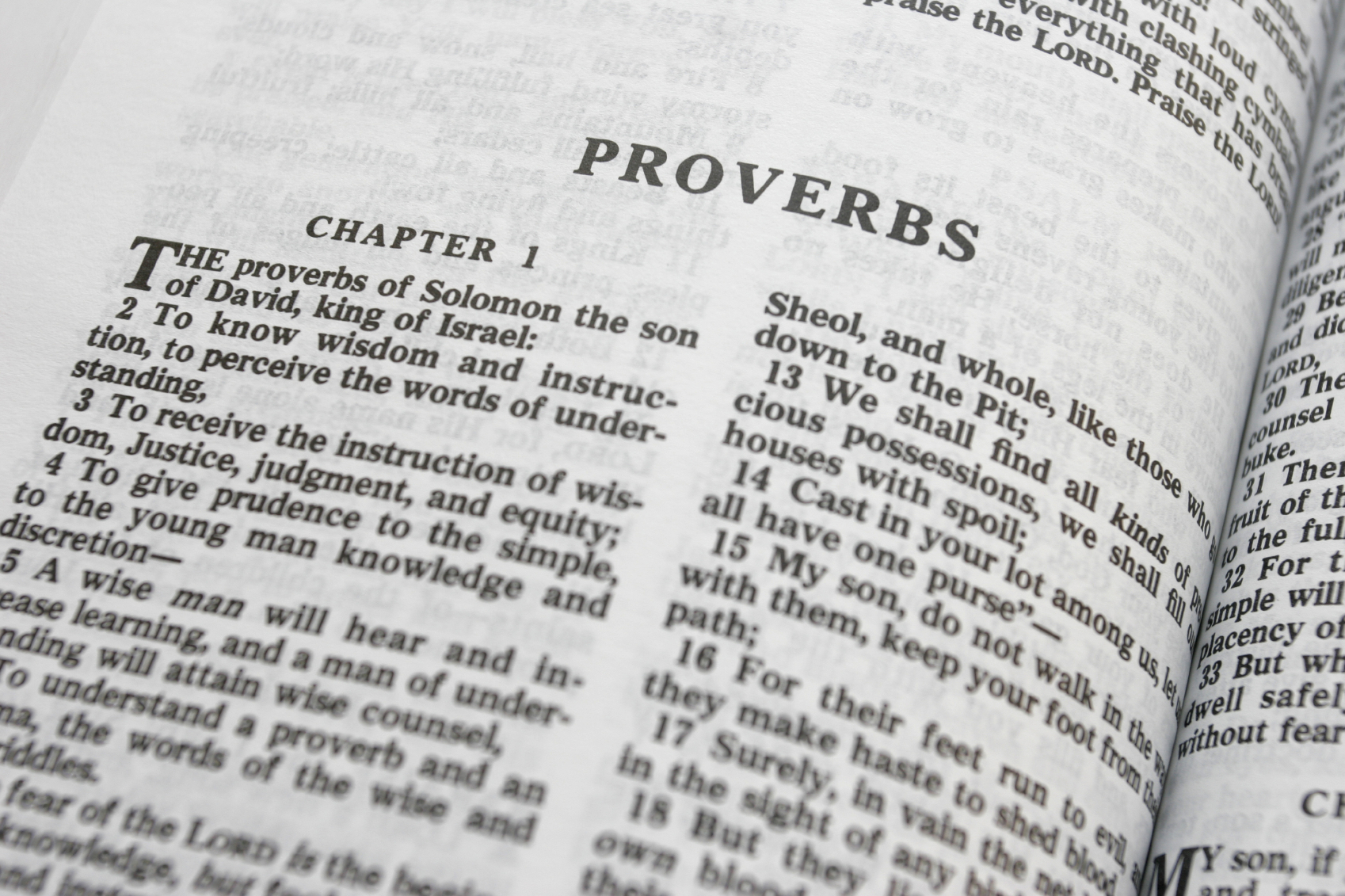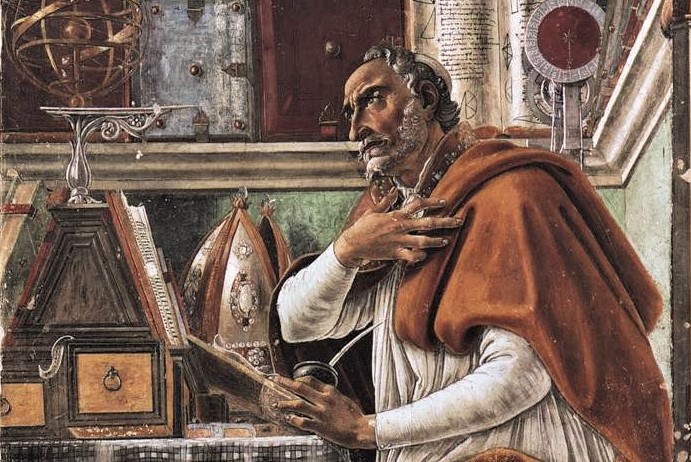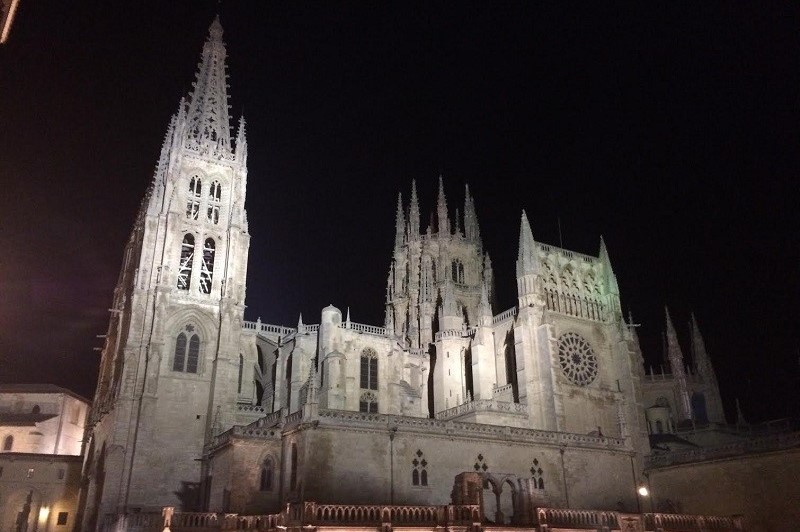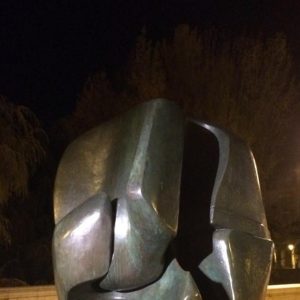In daily Mass this week we are reading from the Book of Proverbs, in which a common theme is the contrast between the wise man and the fool.
Let’s examine a few passages from the Proverbs. They go a long way toward explaining the ultimate destiny of the wise and the destruction wrought by foolishness and evil. My comments are presented in red text.
Blessings are for the head of the just, but a rod for the back of the fool (Proverbs 10:6).
God’s law is a great blessing to those who love wisdom. His commandments are not prison walls; they are defending walls. His commands do not limit freedom so much as they frame it within necessary limits.
To the foolish, though, to those who despise God’s wisdom, to those who hate discipline and reasonable limits, God’s law—any authority that tries to limit behavior—is hateful and punishing, like a rod on the back.
Many today are not simply indifferent to God’s wisdom as proclaimed by the Church and Scripture, they are openly hostile to it!
It is like the reaction of someone who has been sitting in a dark room and is suddenly subjected to bright light. He despises the light and protests its presence as something obnoxious and intrusive. Jesus lamented, And this is the judgment: the light has come into the world, and people loved the darkness rather than the light because their deeds were evil (Jn 3:19).
A wise man heeds commands, but a prating fool will be overthrown. A path to life is his who heeds admonition, but he who disregards reproof goes astray (Proverbs 10:8, 17).
The wise man listens to instruction and strives to base his life upon it. The wise humbly accept that they do not know all things and must be taught by God.
Fools, those who hate wisdom, prattle on and on about their own opinions. They believe something is true simply because they think it.
The text says that the end of a fool is destruction. Many nations, empires, political ideologies, trends, and philosophies have come and gone over the years, yet God’s truth remains. The wisdom and the Word of the Lord endure forever.
He who winks at a fault causes trouble, but he who frankly reproves promotes peace (Prov 10:10).
There is tremendous pressure today to remain silent about sin and evil. Those who do speak of sin are labeled judgmental and intolerant. Sadly, many Christians have succumbed to this pressure; nothing but trouble can result from such capitulation. The moral cesspool that is our modern age is evidence of this.
The correction of faults, frankly and with love, is an act of charity (St. Thomas Aquinas). Error and sin bring war and division, both individually and collectively, but God’s truth, lovingly proclaimed, brings peace by insisting on what is good, right, true, and beautiful.
We live in an age that turns a blind eye to evil. The world often celebrates it in visual entertainment, written media, and music. One can see the destructiveness of the glamorization of evil simply by reading the news.
God’s law is His peace plan for this broken world of ours; it is His wisdom that will bring us peace.
A fountain of life is the mouth of the just, but the mouth of the wicked conceals violence (Proverbs 10:11).
Jesus warned that Satan and those who are evil often masquerade in sheep’s clothing, while underneath they are ravenous wolves (see Mat 7:15). Many in our world today who despise God’s wisdom attempt to conceal their violence by using euphemisms such as pro-choice, pro-woman, no-fault divorce, reproductive freedom, euthanasia, and death with dignity.
Despite the cloak of pseudo-compassion, they ultimately peddle death and division. God’s wisdom, on the other hand, speaks to the dignity of every human life, to hope, and to the promise of life in spite of any difficulties.
The soul of the wicked man desires evil; his neighbor finds no pity in his eyes (Proverbs 21:6).
There comes a steady hardening of the heart of a person who loves evil. As the hardening grows worse, they care less and less for the pain they cause others. They show little pity and don’t seem to mind that they destroy the reputations of others. Their cruelty, both physical and emotional, grows ever worse.
The just man’s recompense leads to life, but the gains of the wicked, to sin. Better a little with fear of the Lord than a great fortune with anxiety. Better a little with virtue than a large income with injustice (Proverbs 10: 15, 16).
For those who are striving to be just and to follow God’s wisdom, the rewards received are to be shared generously with others. The gains of the wicked, however, lead to sins such as gluttony, greed, and hoarding. Rather than sharing their abundance with others, they spend it on the flesh; they place their trust in creatures rather than the Creator, who is blessed forever.
Where words are many, sin is not wanting; but he who restrains his lips does well (Proverbs 10:19).
In an age of non-stop communication and 24/7 news reporting, the sin of gossip is an almost endlessly available temptation. Discretion appears to have been lost. Almost everyone thinks he has a right to know everything about everyone else. The people’s “right to know” seems to have no limits.
Our age is one of many media (visual, verbal, musical, etc.) and on account of this sin is not wanting. We talk endlessly about other people’s business and often ignore our own issues. Why stay in our own lane when we can “tune in at 11,” read a scandal sheet, or surf to a website for the latest gossip?
Rare indeed are those who “restrain their lips” and limit their critique to what is truly helpful unto conversion.
Crime is the entertainment of the fool; so is wisdom for the man of sense (Proverbs 10:23).
Our culture often celebrates the sins of others as entertainment. On television, in the cinema, and in many other forms of communication, fornication, adultery, and all kinds of sexual misconduct are normalized—even celebrated.
It is the same with violence. Most adventure movies today glamorize its use solve problems. We also glorify mobsters and some other violent criminals.
Some will argue that movies should reflect life. That is fine, but most people are not killing other people, burning cities, crashing cars, or blowing up buildings. Most people are not involved in organized crime. Sadly, however, there is a lot of fornication, adultery, and participation in homosexual acts. In movies, this behavior seems to bring few negative consequences; in real life, however, the consequences are often devastating.
Where are the movies that depict wisdom, beauty, love, truth, chastity, and strong families? There are some out there, but they are far outnumbered by those that celebrate crime, violence, dysfunction, and sinfulness.
When the tempest passes, the wicked man is no more; but the just man is established forever (Proverbs 10:25).
The Church alone is indefectible, by the promise of Jesus Christ. Although evil movements, political forces, and sinful regimes rise and boast of their power, they eventually fall. The Church has seen empires rise and fall and philosophies come and go. Evil men have threatened the Church with destruction for thousands of years, but we have read the funeral rites over every one of them.
The truth will out. Evil will not remain; it cannot last. Christ has already won the victory.
The foolish keep resisting; they laugh at God’s wisdom, dismiss the Scriptures, and ridicule the Church. When they are gone, though, we will still be here proclaiming Christ crucified, gloriously resurrected, and ascended to glory.
Those who mock this resist the consistent message of history. Jesus is Lord, and though He permits His enemies time to repent, their days are ultimately numbered—evil cannot last.
These are just a few proverbs that are particularly appropriate for our times. They help us to understand what God has to say about many modern trends.
Here’s a video with some other sayings. In posting this I do not mean to affirm every saying presented in it, but some of them do make good sense!










